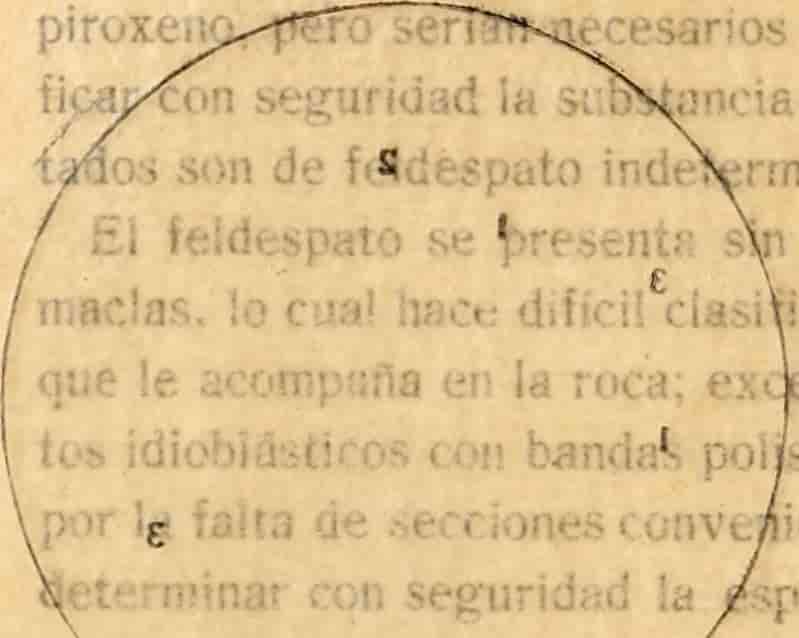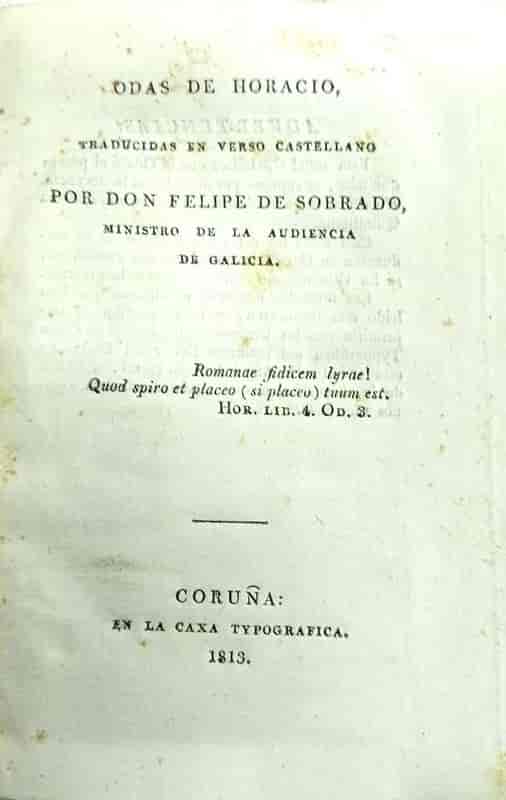Ode: what is an ode, meaning, characteristics, structure, example and how to write an ode?
Contents
What is an ode?
It is one of the most important and oldest lyrical subgenres of universal literature, being a type of poetic composition characterized mainly by the elevated tone it uses and the diversity of themes that can be incorporated in its creation, often alluding to a reflection made by the writer or poet of the ode.
Given the antiquity of the ode and the creations of the artists, it has been a type of composition that has developed very strongly with the passage of time, because in its beginnings, especially, it was accompanied by a musical instrument and since Greece already distinguished modalities in which it could be sung.
Meaning of ode
The term -oda-, comes from the Greek word oide, which refers to song. Hence, this concept is referred to as any type of work created to be sung and is taken as a poetic composition of the lyric genre of literature.
Definition of Ode
The ode can be defined as a lyrical subgenre in which the poem is designed to be sung, whose purpose is often focused on making some kind of praise to virtues possessed by objects or people and that the poet wants to exalt in a positive way. It is a poetic composition in verse with an elevated tone that can address a wide variety of topics with a reflective content of the poet printed in the work.
The lyrical motifs in the case of the ode, are fundamentally related to admiration, passion, honor and effervescence towards an individual or other object.

What is the function of the ode?
The ode has been used with the purpose of making positive praises to a character, an object or an individual. In this way, the ode expresses the admiration that the poet holds and the devotion that he grants to that to which he pays homage through the verses that compose the work, are aspects that the poet considers transcendental.
Origin of the ode
In the beginning, odes were sung without the presence of musical instruments, so they were sung both by choirs and by a single voice. However, as we will see, this will change with the passage of time. The ode was born in ancient Greece with what is considered the main exponent of this lyric subgenre, Pindar. Pindar’s compositions are poems that soon began to link the accompaniment of musical instruments with a voice and the lyre, although they also included the chorus. This allowed him to be considered as a type of lyric composition.
Soon three names representing the ode will stand out, besides Pindar there will be Sapphos and Anacreonte. For his part, Sapphos will focus on love themes and sorrows related to this feeling, while Anacreonte was directed to celebration, festivities and wine. For his part, Pindar will direct his creations to the praise of the Empire, the military, warriors and athletes.
This is how the ode began to develop and spread. It reaches the Latin poet Horace, who will raise other elements for its composition and will soon pass to posterity with other artists who will work this form of lyric among which are Federico Garcia Lorca, Garcilaso de la Vega, Fray Luis de Leon, Petrarca, among others.

Characteristics of the ode
Here are some key characteristics about this literary subgenre:
Theme
As we mentioned, the ode enjoys a large number of options to choose a theme for composition, so an ode can turn to areas such as religion, philosophy, love and feelings, heroic figures, among others.
Values
Often in the odes are addressed not only a variety of topics, but also an exaltation of certain values to which the poet goes, so the themes focus on fundamental elements of the human being, among which lies death, empires, pleasures, love, courage, war, heroism, among others, as is the case of the “Ode to Joy”, one of the most important and representative compositions of the ode.
Composition
Another of the characteristics that we must take into account is that the ode can be presented with regular stanzas and with very varied rhymes, including varied themes among which the poet exalts his values. It will use the apostrophic attitude, although it should not be confused with the hymn, which focuses on an event or fact that exalts with force.
Structure of the ode
Regarding the parts or the form in which the ode is constituted, the following elements should be taken into account:
Language
It is one of the most important aspects of composition of the ode, since it is characterized by maintaining a generally grandiloquent language, in which through the exaltation that is made to the object or person of the work, the reader is also persuaded and even the one who listens to the song on the subject that is exposed.
Tripartite composition
This type of composition refers to the three elements of structure that must contain the theme of the ode. Thus, in the stanza the theme on which the work will be developed is mentioned, the antistrophe will present the knot or central part of the ode and finally the epode will close the poem with the reflection that is usually contained by the poet.
Rhyme
It should be noted that rhyme is not an essential structure of the odes, since most of them are written in a structure of no rhyme and rhyme.
Types of ode
Since ancient times, in Greece, two types of odes are distinguished according to their functionality, these are:
Choral ode
This type of odes are characterized because they focus on a song sung by a group of people who make up the choirs.
Odes sung by one voice
Unlike the previous type of odes, this type of ode is characterized by the fact that it is sung by only one person, also known as monody.
With the passage of time and its constant development by poets of different periods, the list of types of odes was expanded according to the changes that were taking place and their needs, so that it was possible to consolidate the following modalities of the ode:
Irregular ode
They are odes of English origin that include romantic themes where the ode is presented with an irregular scheme of composition within the rhyme. Thus, they do not have an established pattern of rhyme.
Pindaric Ode
It is one of the most classic forms of the ode, which comes from its primary modalities. The pindaric ode has a regular rhyme that handles themes more familiar to the public and owes its name to Pindar, one of the most important figures of ancient Greece.
Anacreontic Ode
It also owes its name to Anacreonte, another of the oldest ode poets. This modality is characterized by the fact that the author sang mainly of love and eroticism, as well as giving it a unique meaning, so that the anacreontic ode focuses on these types of themes.
Horatian Ode
It is also named after the poet Horace, who became one of the most important Latin poets. His works and thus, this type of ode will be characterized by having an absolutely intimate tone while maintaining a regular rhythm in the composition.
Romantic Ode
Contrary to what one would think, this type of ode is linked to the elements of Romanticism as an aesthetic movement born during the 18th century and opposed to other movements that you can find in the Literature section. The romantic ode will bring with it new ideas for the creation of the ode, incorporating a greater tint of subjectivity and with many more emotions in it.
Sacred ode
As its name suggests, it will be a type of ode whose composition focuses on religious themes in which God will often be praised, as well as exalting the experience of the divine.
Heroic Ode
This type of ode is based on the singing of the feats and victories achieved by heroic figures. A particularity that should be highlighted in this type of ode has to do with the fact that it exalts not only the heroes of antiquity, but also mentions the heroes of modernity.
How to write an ode?
Below we will see some key elements for the writing of this type of lyric composition, let’s see:

Brainstorming
It is always recommended to brainstorm ideas or thoughts in order to have a first approach to the choice of the topic to be worked on. To do this, it is convenient to think of a person or object that we find really wonderful, of which we can write down positive aspects and that awakens harmonious feelings in us.
You can write down those aspects that arouse more affinity and passion in you to choose the theme on which you are going to write the ode.
Choosing the theme
The first thing is to be clear about the theme to which we are going to refer, either in the form of praise or exaltation. This must be a subject that the writer is passionate about and that moves him, as this will allow him to develop a series of feelings and expressions that will be imprinted in the lyrical composition. The personal connection with the object or person is decisive for the writing of the ode and its complete expression.
Identifying positive characteristics
Given the meaning of the ode, it is key that in this step we focus on gathering all those positive characteristics of the subject we have selected. You can make a list of them in which you explore the sensations they produce and the positive feelings they awaken, these will be key to the development of the ode when its values and virtues are exalted.
If you want to make a contrast between the positive and negative elements, it is essential that the positive ones are of much more strength and power for the final vision of the ode.
Writing the ode
Now that we have all of the above, it is time to start writing the ode. The first thing you should keep in mind is that in the development we must address directly to the object we have chosen to exalt in the ode, so that we can even resort to the apostrophic attitude, that is, addressing it essentially.
Final revision
Once you have written the ode, go away for a couple of hours. This time away will help you to identify elements that you could improve, make modifications and even refresh your imagination a little to turn to other sources of inspiration that will allow you to nourish the same ode.
Check other fundamental aspects such as spelling and the general composition of the ode. And don’t forget to read works of this type that you can take as a reference from the authors and compositions that you will see below to continue exploring this subgenre, because to start writing works like these, it is absolutely necessary to read many of them first.
One of the most important authors of this type of literary lyric compositions is Pindar, who devoted himself to the creation of a great variety of odes that were often addressed to heroes, athletes and also to the gods. Alceo of Mytilene, for his part, wrote odes in honor of warriors and military men. Sappho wrote odes in the name of love and lovers, Anacreonte also wrote for love but included other themes such as the pleasures of the table.
With the passing of time, other generations of ode writers will emerge, among them Horacio, Juan Nicasio Gallego, Fray Luis de León, Garcilaso de la Vega, Quintana, Herrera, Cienfuegos, Pablo Neruda, Ronsard, Bernardo Tsso, Víctor Hugo, Manzoni, Théodore de Banville, Klopstock, Abraham Cowley, John Gay, Petrarca, Federico García Lorca, among others.
Example of an ode
One of the most remembered and important works of this type of lyric subgenre is the Ode to Joy, also known as “Hymn to Joy”, written by Friedrich von Schiller in 1785 and which was set to music by Ludwig van Beethoven. The following is an excerpt from this important work in its Spanish version:
Oh friends, let us leave those tones!
Let us sing songs more pleasant and full of joy!
Joy! Joy!
Joy, beautiful sparkle of the gods!
daughter of Elysium!
Drunk with enthusiasm we enter,
celestial goddess, in your sanctuary.
Thy spell unites again
what bitter custom had separated;
all men become brothers again
where thy gentle wing rests.
He to whom fate has granted
a true friendship,
He who has won a beautiful woman,
unite his joy to ours!
Even he who can call his own
even one soul on earth his own.
But whoever has not achieved even this,
let him go weeping away from this brotherhood!
